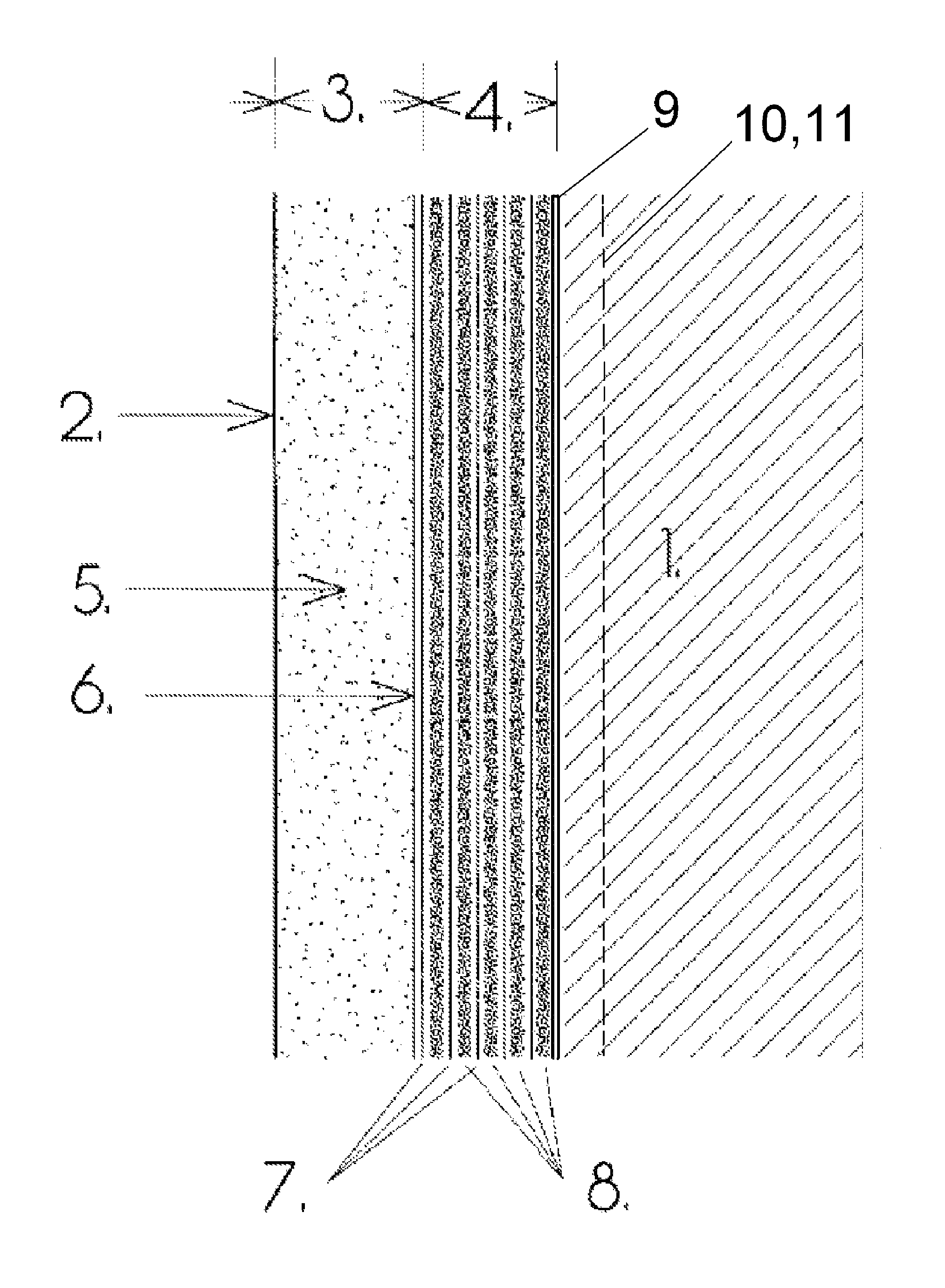Multi-layer building insulation and wallboard sheet with multi-layer insulation
a technology of building insulation and multi-layer insulation, which is applied in the field of multi-layer building insulation and wallboard sheets with multi-layer insulation, can solve the problems of building after construction, large dimension of typical framing materials, and substantial cost of materials over fiberglass blankets or cellulos
- Summary
- Abstract
- Description
- Claims
- Application Information
AI Technical Summary
Problems solved by technology
Method used
Image
Examples
Embodiment Construction
[0015]In accordance with the disclosure, a multi-layer building insulation material and a wallboard sheet with multi-layer insulation, and related manufacturing and installation methods are provided. In accordance with the disclosure, layers of membranes and air can be “sandwiched” together increase the thermal insulating value (“R” value) of a surface beyond that of a single layer of insulating material. In place of an air layer, a thin layer of foam plastic can be used as a separator between two adjacent layers or membranes. By way of further example, one or more layers of a clay aerogel can be used as an insulating layer. Such materials are known in the art and described, for example, in U.S. patent application Ser. No. 11 / 713,189, filed Mar. 2, 2007 and in U.S. patent application Ser. No. 12 / 012,248, filed Feb. 1, 2008. Each of the aforementioned patent applications is incorporated by reference herein in its entirety.
[0016]It is believed that an “R” value of about 1 can be achie...
PUM
| Property | Measurement | Unit |
|---|---|---|
| impermeable | aaaaa | aaaaa |
| air-impermeable | aaaaa | aaaaa |
| insulating | aaaaa | aaaaa |
Abstract
Description
Claims
Application Information
 Login to View More
Login to View More - R&D
- Intellectual Property
- Life Sciences
- Materials
- Tech Scout
- Unparalleled Data Quality
- Higher Quality Content
- 60% Fewer Hallucinations
Browse by: Latest US Patents, China's latest patents, Technical Efficacy Thesaurus, Application Domain, Technology Topic, Popular Technical Reports.
© 2025 PatSnap. All rights reserved.Legal|Privacy policy|Modern Slavery Act Transparency Statement|Sitemap|About US| Contact US: help@patsnap.com


